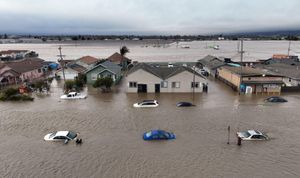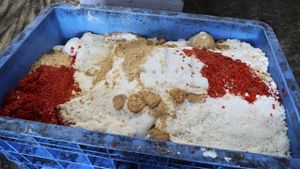On February 1, 2025, the Australian government announced the nomination of Victoria's historic goldfields for World Heritage status, marking a significant step toward formal recognition by UNESCO. This area is widely regarded as the most extensive and well-preserved gold rush site globally, gaining attention not merely for its rich past but for its potential role in boosting tourism and protecting cultural heritage.
The goldfields, often referred to as the "Golden Triangle," were pivotal during the 19th-century gold rush, attracting thousands of hopeful miners from around the world. According to Federal Environment Minister Tanya Plibersek, the nomination aims to celebrate and safeguard this historic region. She stated, "It deserves to be celebrated and protected," noting the region's rich historical narratives of migration and community resilience.
More than 30,000 Chinese immigrants flocked to the goldfields during the peak years of the rush, contributing significantly to the demographic shift within Australia. By 1861, Chinese-born individuals comprised about 3.3 percent of the population, highlighting the deep historical roots intertwined with the gold rush era.
The Victoria goldfields encompass several key areas, including the Bendigo historical landscapes and the Castlemaine goldfields—recognized as the finest representations of gold rush landscapes. With millions of tourists visiting these sites each year, the anticipated World Heritage listing is expected to significantly boost tourism revenue, contributing approximately 1.8 billion Australian dollars (around 1.1 billion US dollars) to the Victorian economy annually.
Premier Jacinta Allan, who also addressed the announcement, assured the public amid concerns over how the listing might restrict access to the land. She emphasized, "This does not impact current land use or current land ownership," reaffirming her commitment to maintaining recreational activities, including gold prospecting. Allan highlighted the goldfields as "a living testimony of those who came to Victoria seeking a brighter future,” reflecting on how the gold rush transformed the state's economic and cultural fabric.
Allan also pointed out the role of Indigenous communities throughout history, noting their participation and acknowledgment within the World Heritage application process. She conveyed the aspirations tied to the listing, stating, "World Heritage sites are on bucket lists of tourists worldwide, and our historic goldfields are on their way to be right there among them." This highlights both the tourism potential and the importance of preserving the cultural narrative of the victories and struggles of those who sought fortune.
Plibersek underscored the importance of international recognition, which, according to her, would not only help protect the heritage of the goldfields but would also strengthen their role as tourist destinations. The process of securing World Heritage status involves significant documentation and review, but this first step via Australia's Tentative List signals serious commitments from the government.
The Victorian Premier expressed optimism about the future of these goldfields as they strive for full UNESCO recognition. The collaboration with local and Indigenous groups demonstrates inclusivity and respect for historical narratives, which has been central to this nomination. The submission embodies commitments to reflect and honor the contributions of diverse communities throughout Australia’s history.
Tourists can expect to encounter heritage-rich experiences as they traverse this preserved area, showcasing tales of migration, economic aspiration, and struggles for identity. The Victorian goldfields have the potential to provide lasting educational and cultural impacts on visitors, fostering appreciation for Australia’s fascinating history.
With this nomination, the Victorian goldfields not only honor the memory of the past but also embody promises for the future—an acknowledgment of diverse narratives eager to be told and re-told to generations to come.



